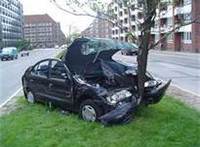New Study: Teen Driver Deaths Increase in 2012
 |
Preliminary Data Indicate Deaths of 16- and 17-Year-Old Drivers Up 19 Percent
WASHINGTON--Feb. 26, 2013: A report released today by the Governors Highway Safety Association (GHSA) reveals that the number of 16- and 17-year-old driver deaths in passenger vehicles increased dramatically for the first six months of 2012, based on preliminary data supplied by all 50 states and the District of Columbia. Overall, 16- and 17-year-old driver deaths increased from 202 to 240 -- a 19 percent jump.
The new report -- the first state-by-state look at teen driver fatalities in 2012 -- was completed by Dr. Allan Williams, a researcher who formerly served as chief scientist at the Insurance Institute for Highway Safety. Dr. Williams surveyed GHSA members, who reported fatality numbers for every state and D.C. The increase in teen driver deaths coincides with a projection from the National Highway Traffic Safety Administration (NHTSA) in which all traffic deaths increased by 8 percent. It is particularly concerning that 16- and 17-year-old driver deaths appear to have increased at an even greater rate.
Deaths of 16-year-old drivers increased from 86 to 107 (a 24 percent change), while the number for 17-year-old drivers went from 116 to 133 (a 15 percent change), a cumulative increase of 19 percent. Twenty-five states reported increases, 17 had decreases, and eight states and the District of Columbia reported no change in the number of 16- and 17-year-old driver deaths.
Dr. Williams attributes much of the increase to the fact that the benefit of state Graduated Driver Licensing (GDL) laws may be leveling off, as most of these laws have been in place for some time. Additionally, Dr. Williams speculates that improving economic conditions are contributing to an increase in teen driving, thus increasing their exposure to risk. Dr. Williams notes, "Based on 2011 final data and the early look at 2012, it appears that we are headed the wrong direction when it comes to deaths of 16- and 17-year-old drivers."
Dr. Williams stresses that while today's news is certainly not good, deaths in this age group remain at a historically low level. He notes, "We are still at a much better place than we were ten or even five years earlier. However, the goal is to strive toward zero deaths, so our aim would be that these deaths should go down every year."
Kendell Poole, Chairman of GHSA and Director of Tennessee's Governor's Highway Safety Office, said, "Any increase in highway deaths is unacceptable, particularly among our teens. We know from research and experience that teen drivers are not only a danger to themselves, but also a danger to others on the roadways. So these numbers are a cause for concern." He continued, "As the report notes, a widespread strengthening of laws is still possible, and utilizing effective tools outside of GDL should be a focus. These include improving driver education and ensuring that scientifically based educational programs are available to new drivers."
Chairman Poole added, "In my state of Tennessee, we have worked extensively to keep teen drivers safe. Despite our efforts, teens remain our most vulnerable population. With the advances in technology, we suspect distracted driving deaths among teen drivers are rising. We continue to work with teens, parents, educators and law enforcement to address this problem."
Barbara Harsha, Executive Director of GHSA, stressed that while data are preliminary, she is concerned that signs point to a significant increase in 16- and-17-year-old driver deaths for 2012. She advises states to focus on strengthening GDL and programs that are data-driven. Harsha adds that states should consider implementing parent programs to help parents keep their teens safe. She says, "Parents have a huge responsibility to ensure safe teen driving behavior. States can facilitate this by providing innovative programs that bring parents and teens together around this issue."
The full report, including state-by-state data, is available online at GHSA .


